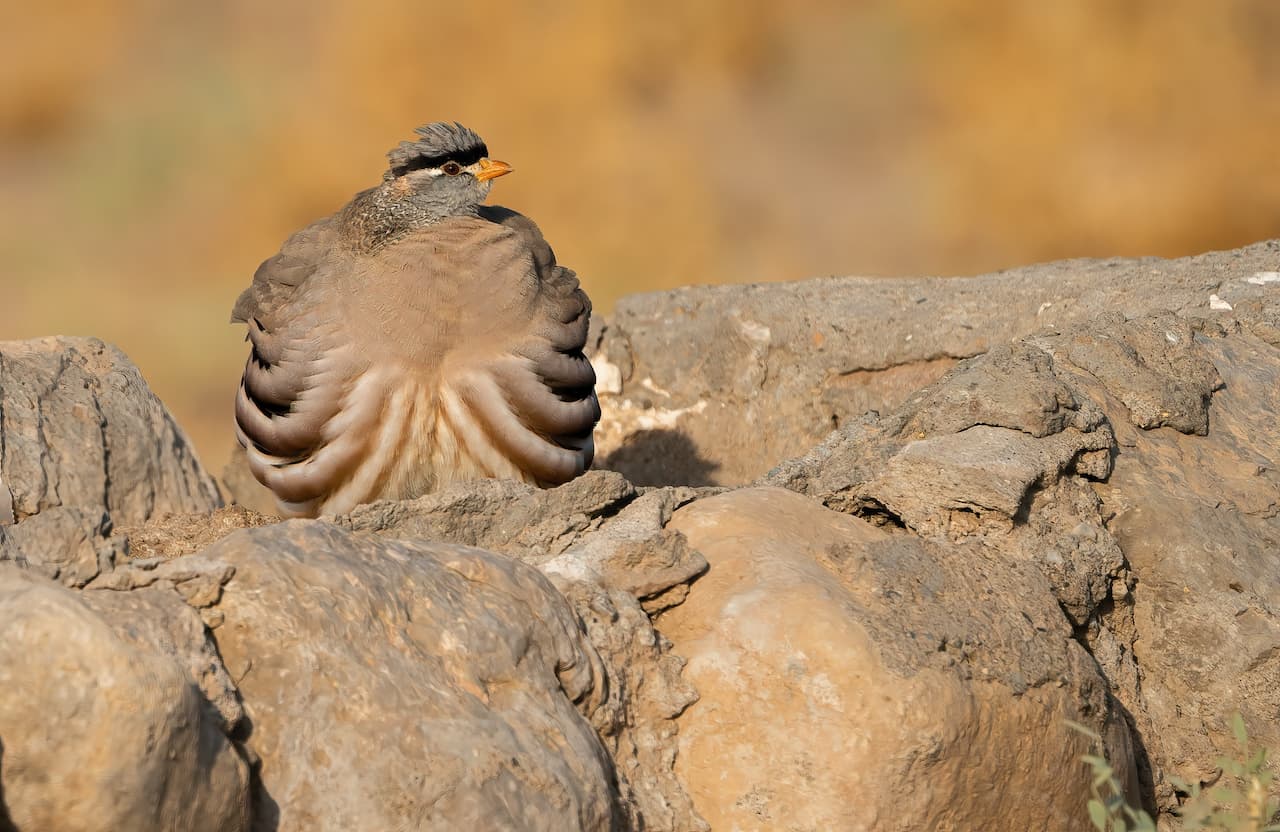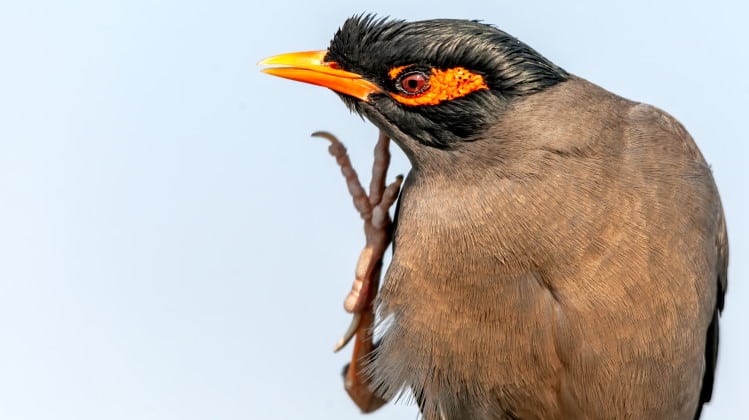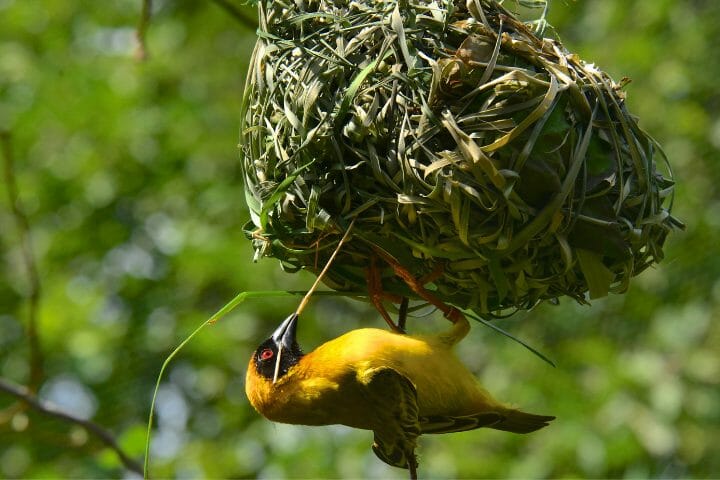Where Do Sandhill Cranes Nest?
A fascinating species for many reasons, Sandhill cranes travel all across America in search of the best foraging grounds, migratory stopover sites and nesting habitats.
Spending their winter and summer months in a variety of countries and states, Sandhill cranes tend to have similar nesting sites creating the right environment to hatch and raise their offspring around wetland habitats.
But how much more are we still to learn about Sandhill nesting habits?
Where Do They Build Their Nests?
Do you ever wonder why you never come across a Sandhill crane nest? Well, they usually build their nest dep within wetland habitats such as marshes, swales and/or bogs.
Importantly, the water level is a crucial point they consider when selecting their nest site. The optimal water depth is said to reach around 40 inches and located over open water where their nests can be on land or floating.
Sequestered deep within wetland landscapes, Sandhill cranes are protected from predators and in the optimal habitat to forage for protein and energy-rich food.
Vegetation such as Cattails, sedges, bulrushes, and grasses surround the crane’s nests and hide them away from local predators.
They are often also located far away from wetland edges to be trampled by other animals or humans. Out of all the nest locations, floating nests are said to be the most common and the best place for them to forage for aquatic food sources.
When Do They Build Them?
Depending on whether they are migratory or non-migratory cranes, the creation will differ year-round. Sandhill’s that are permanent residents in states can begin nest-creating and laying their eggs as early as December and as late as August.
Being a settled pair with no migratory plans means they have more time to court and build their nest. In comparison, migratory flocks on a tight time schedule are known to nest between April and August every year.
Interestingly, in Colorado cranes are recorded to begin building their nests in mid-April and into May.
Due to the state’s high elevations (7,500 to over 9,000 feet), the cranes often nest for a month longer than other sub-species due to the harsher and colder snow conditions within the Yampa river valley.
How Long Do They Use Them?
Generally, Sandhill cranes have a long nesting duration.
As previously stated, as the non-migratory pair have no plans on moving they can take as long as nine months to nest, produce and hatch their eggs together. Migratory cranes however nest for no more than 5 months.
What Do They Build Their Nests With?
When the nesting season begins, Sandhill’s will start to create their nest using dried plant matter from the previous year’s vegetation such as reeds and grasses.
As the season progresses the cranes will forage and add new plant material to bulk out the nest and make it more comfortable and secure to lay eggs and incubate them.
It is recorded that both the male and female individuals from the pair collect vegetation to build the nest with, but the female is said to take more care standing on top of the nest delicately building it. Once collected, the pair will toss the vegetation with their beaks over their shoulders forming a mound.
From standing in the middle and building around her, the female creates the nest into a cup shape around four to five feet in diameter. The mound and egg-like shape subsequently prevent the eggs from rolling out
Do They Return to the Same Nest Site Each Year?
Having a good memory, particular flocks of Sandhill cranes will return to the same nesting site and rebuild their nest within the same locations each year.
Whether this is due to a learned routine or last year’s hatching success, the birds are spotted year-round across the same nesting sites by bird watchers and scientists.
How Long Do Their Offspring Stay In Them?
Known as precocial, baby Sandhill cranes will venture from the nest with confidence the day after hatching.
They will follow their parents across agricultural fields and navigate wetlands in search of food sources, learning foraging behaviors very young.
At around 65 days after hatching, the offspring will attempt to fly in preparation for their yearly migrations.
Do They Nest at Night?
Sandhill’s are typically known to sleep at night and are usually spotted on one leg with their heads tucked beneath their shoulder in shallow water.
While nesting, the pair will take turns to incubate the eggs and sleep near the nest. This allows the eggs to stay warm and the pair to protect their clutch from any nighttime predators.
Conclusion:
There is a lot to do when it comes to being a Sandhill crane and entering nesting season. From choosing the right location and rebuilding the nest with old and new vegetation, creating a nest to lay their eggs is successfully achieved by Sandhill crane pairs.
It is interesting to note the difference in nesting season duration due to the Sandhill cranes migratory patterns. If they are non-migratory pairs they tend to have longer nesting seasons and larger nest sites due to them having more time in their nesting habitat year-round.
A successfully built egg-cup shaped nest will conceal and protect eggs from predators in an aquatic location that provides vast food sources for both parents in this crucial stage for the pair.






Hi Gordan,
I work for a manufacturing company in Battle Creek, MI. We have a pair of Sandhill cranes that return to a nest somewhere on the company property every spring. We (employees) love to watch them all spring. We have witnessed their baby or babies the last couple of years unfortunately not live very long. We have also raccoons, coyotes and fox in the area.
My question for you is, do you think there is anything we can do to help protect the baby cranes in the future?